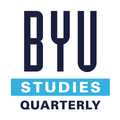Welcome to Chiasmus Resources

This website is designed to help in the research and study of chiasmus, a literary device found in texts from many cultures, most notably in ancient texts. People everywhere are welcome to submit chiasms or information about recent publications concerning chiasmus, and our weekly feature draws attention to interesting chiastic arrangements that may be deserving of recognition and discussion.
Chiasmus is a literary device in which words or meanings are structured in an inverted parallel pattern: A B B A is a simple chiasm. The name of the pattern comes from the Greek letter chi, X, because the pattern crosses, like an X. Chiasmus is frequently found in the Bible, but it was used in ancient Greek and Latin literatures and other sacred writings.
The Chiasmus Index
Compiled mainly by Robert F. Smith, this index lists thousands of passages that have been analyzed and sketched out as chiastic in the Bible and in other religious books and literatures. If the index does not contain a chiasm that should be added to this resource, please feel free to use the submit chiasm tab to recommend any such text.
Bibliography
The bibliography on this web site, developed by Daniel B. McKinlay and many others, aims to include every work that identifies a chiasm, published either in print or online, by both scholars and lay researchers. If the bibliography does not contain a publication that should be added to this resource, please feel free to use the submit chiasm tab to recommend any such publication.
The Chiasmus Archive
The chiasmus archive is an extensive collection of papers, articles, drafts, letters, emails, and materials gathered for over 40 years by John W. Welch. This unprocessed collection is housed in the L. Tom Perry Special Collections in the Harold B. Lee Library at Brigham Young University.
The preponderance of works listed on this web site deal with chiasmus in the Hebrew Bible and the Greek New Testament, but we also include identifications of chiasmus in the sacred literatures of any religion, ancient and modern.
Recommended Reading
The modern scholarly study of chiasmus owes thanks to pioneering efforts of John Jebb and Thomas Boys in England in the 1820s, and to the work of Nils Lund, who published Chiasmus in the New Testament in 1942, and many others since that time. Listed or linked under our tab recommended reading are many of these classic texts, including an English translation of Paul Gaechter’s 1965 monograph, The Literary Art in the Gospel of Matthew, available for the first time here.
Criteria for Chiasmus
Several efforts have been made over the years to establish criteria for the identification and evaluation of chiastic patterns, and these are conveniently summarized here on the chiasmus criteria chart.
If you would like to add to or ask any questions about anything contained in these resources, you may contact us here.
Tips for Using This Website
Bibliography: Click the title of each entry to view expanded information, including chiastic references.
